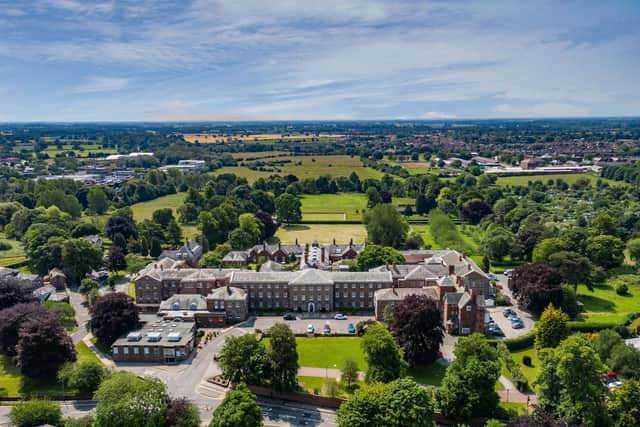The Retreat: Grounds of Georgian mental asylum in Yorkshire to be opened to the public once building is converted into flats
PJ Livesey Group’s plans for the Grade II*-listed hospital, which has extensive gardens, have been praised by Historic England.
Built in the late 18th century, The Retreat played a pivotal role in the development of the treatment of mental illness. In contrast to the traditional use of fear and restraint to ‘cure’ patients, the hospital focused on a gentle and positive approach derived from the founders’ Quaker beliefs.
Advertisement
Hide AdAdvertisement
Hide AdThe hospital grounds were purposely designed as a therapeutic landscape with walks and a sports ground laid out to encourage fresh air and exercise.


While The Retreat remained a hospital for more than two centuries, the complex is no longer suitable for NHS use.
Historic England inspector of ancient monuments Mike Collins said: “The Retreat is a hugely important historic site; its pioneering approach to mental illness and the indoor and outdoor facilities that were constructed to deliver it, were hugely influential both in Britain and abroad.
“PJ Livesey Group’s plans for the Retreat present a positive vision for the future of the site which is sympathetic to the historic significance of the hospital and also offers public benefits by making its beautiful grounds accessible to local people and visitors.
Advertisement
Hide AdAdvertisement
Hide Ad“It’s really helpful for us to be involved with a project like The Retreat in the early stages. This way, we can highlight the significance of protected historic sites and advise on how development plans can help retain and enhance their special character.”
The Retreat was a progressive hospital opened in 1796 by the Quaker movement, as an alternative to the inhumane treatments offered by conventional lunatic aslyums such as York's, which later became Bootham Park Hospital. It closed to in-patients in 2018. The buildings are set in 13 acres of grounds, much of which have never been accessible before. The estate was a turnip farm and orchard before the hospital was built.
The grounds include a tennis court, cricket pitch, bowling green and daffodil meadow. The sports facilities are currently disused and local clubs will be invited to revitalise them. The Quaker burial ground will remain operational.
